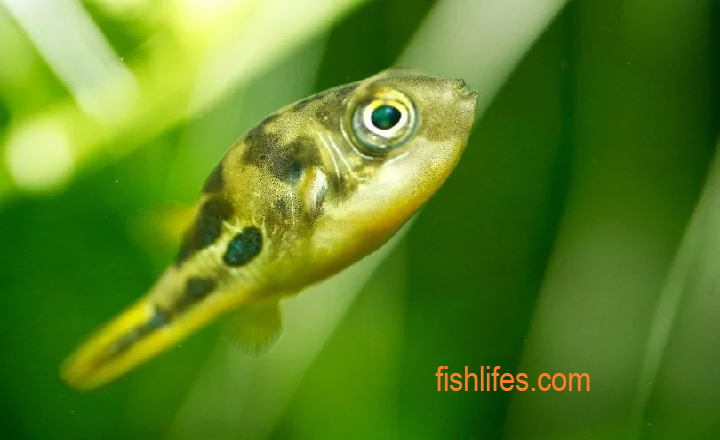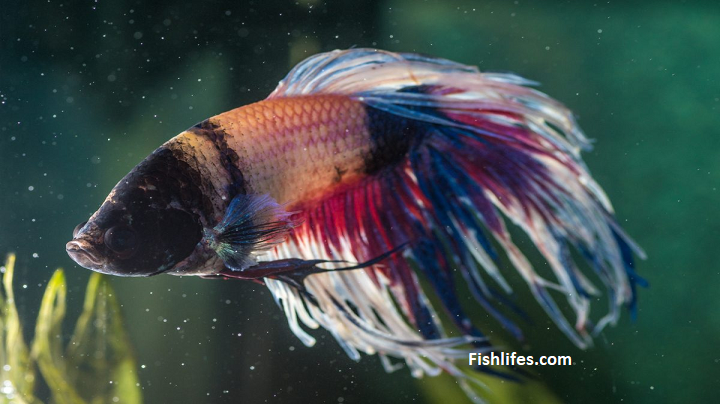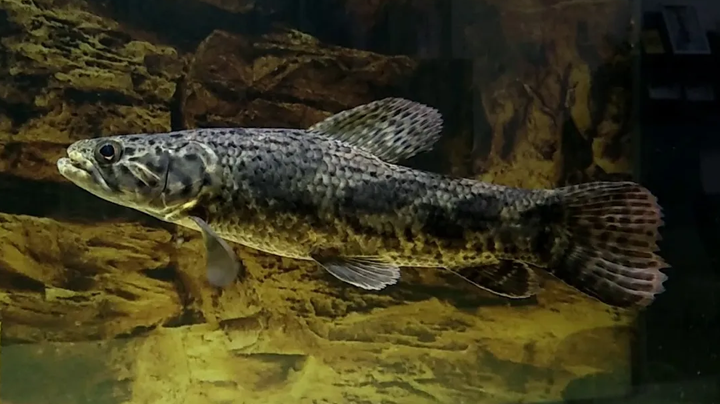Dwarf Pea Puffer Care is a topic of great interest to aquarium hobbyists. This type of fish, also known as Pygmy Puffers, are small in size yet can be incredibly competitive. They are colorful and energetic and make great additions to the community tank.
Dwarf Pea Puffers require specific care and attention regarding their diet and water parameters that must be maintained to live healthy lives.

What Is Dwarf Pea Puffer?
Also known as the Pygmy Puffer or Pea Puffer, it is a freshwater fish native to India and Sri Lanka. It is a member of the Tetraodontidae family and is considered one of the smallest species in its genus. This tiny fish grows to only 1 inch long and can live up to 3 years with proper care.
The Dwarf Pea Puffer is generally characterized by its round body shape and large eyes. They have an olive green coloration on the back half of their bodies, while they possess yellow-orange bellies with black spots scattered across them. Some specimens may display blotched or striped patterning in shades of brown and black, as well as white patches near the eyes, lending them an even more interesting aesthetic appeal.
Dwarf pea puffer size?
Dwarf Puffer is a species of fish growing in popularity among aquarium hobbyists. These small but aggressive fish are native to India and Bangladesh and inhabit slow or still bodies of water such as ponds, streams, and rivers.
They have an omnivorous diet that consists primarily of small invertebrates like insect larvae and crustaceans. But how does one get their hands on these little fish?
The most common way to acquire a Big Dwarf Pea Puffer is through online sellers who breed them specifically for the pet trade. Many online retailers offer live specimens shipped directly to your door.
It’s essential to make sure you purchase from reputable vendors so you know the health status of your new aquatic friends before introducing them into your tank.
How long do Dwarf Pea Puffers live?
Dwarf pea puffers are small, colorful freshwater fish that can make a great addition to any home aquarium. These tiny fish have long lifespans, but how long do dwarf puffers live? To answer this question, it’s essential to understand the factors that influence the lifespan of these pint-sized aquatic pets.
On average, you can expect your dwarf pea puffer to live for 4-5 years when properly cared for and given their ideal environment. It could survive up to 7 years with proper care, depending on its diet and general health.
The most important factor in determining your puffer’s lifespan is providing clean water conditions and a varied diet of pellets, freeze-dried foods, flakes, and other treats like snails or earthworms. Regular water changes will also help keep your fish healthy over time.
Is Dwarf Pea Puffer Aggressive?
Dwarf Pea Puffers, or Pygmy puffers, are freshwater fish from Southeast Asia. They are small, colorful, and endearing to many aquarium enthusiasts. But how aggressive is this tiny fish?
Aquarists often wonder if the Dwarf Pea Puffer will become aggressive with other tank mates or only with other members of its species. While they can get territorial towards other puffers in their tank, they generally do not bother other peaceful inhabitants like shrimp or snails.
It’s important to note that they are active swimmers, so they should not be housed with slow-moving bottom dwellers such as corydoras cats or plecos.
Dwarf Pea Puffer Behavior
Pea pufferfish behavior is unique and entertaining. These tiny fish can bring a lot of personality to an aquarium, but they also require special care due to their small size. Unlike some other pufferfish, Dwarf Pea Puffers are not aggressive regarding tankmates. They may be territorial sometimes, but they typically get along with their tank mates if the proper environment is provided.
These little fish love to explore and forage for food throughout the day, so the aquarium must have plenty of hiding places and live plants or decorations to hide in and around. Dwarf Pea Puffers are also exceptionally social and enjoy playing with one another when kept in groups of five or more, making them an excellent choice for community tanks.
One Look Care Guide
| Scientific name | Carinotetraodan travancoricus |
| Common name | Dwarf pea puffer Malabar pufferfish Pea pufferfish Pygmy pufferfish Dwarf puffer Indian dwarf puffer |
| Care Level | Intermediate |
| Native to | Southwest India |
| Type | Freshwater |
| Color | yellow and green color |
| Temperament | Aggressive |
| Tank size | Minimum 10 gallons tank |
| Other water parameters | Water hardness – 5 to 15 KH pH level – 7 to 8 |
| Preferred temperature | 72 to 82 Fahrenheit |
| Growth rate | No exact growth rate |
| Preferred food | Blood worms Brine shrimps Tubifex Mosquito larvae Snails Blackworms |
| Recommended tank mates | Otocinclus Kuhli Loach Neon tetra Ember tetra Cherry shrimp Danios |
| Feeding frequency | One to two times per day |
| breeding | Possible in the captivity |

Dwarf Pea Puffer Care
Pea pufferfish care is essential to ensuring healthy and happy fish.
Dwarf pea puffer tank size
Before bringing this tiny fish home, it’s essential to understand what size tank they need to remain healthy and happy.
Regarding dwarf pea puffers, 10 gallons is the recommended tank size for one or two fish. This may seem small, but because these fish are so active, they require lots of swimming space, which can be provided by setting up plenty of decorations and hiding places like plants or driftwood, as well as rocks and sand substrate for digging inside your tank.
As with any smaller tank setup, it’s crucial to ensure a robust filter is running at all times and regular water changes to keep your environment clean and healthy.
How Many Should Dwarf Puffers Be Kept Together?
The answer depends on several factors, such as the size of the tank, the type of filter system, and water parameters. Generally speaking, it is recommended that no more than two Dwarf Pea puffers should be kept in a single tank.
This is because they are territorial and require plenty of room for swimming and hideouts for solitary moments. If too many are put into one aquarium, it can lead to fighting between them and stress-related issues like fin tearing or poor health conditions.
Tank Setup
When it comes to setting up a tank for your dwarf puffer, several essential elements should be taken into consideration.
- First and foremost, proper rocks and driftwood should be included in the tank. Stones create more surface area for beneficial bacteria to colonize, while driftwood helps to create a natural habitat for the fish. It can provide hiding places for the fish and provide them with food when they scrape off algae from its surface.
- Creating caves with rocks and driftwood is also essential to creating a suitable environment for them. Shelters provide security and protection from aggressive tankmates or other environmental stressors such as bright lighting or strong currents.
- The cave should be big enough to allow the fish to swim freely but small enough to feel secure.
- These freshwater fish are incredibly active, and as such, they require a well-designed tank with plenty of room for exploration. Plants should be included in the tank setup to provide hiding spots for the dwarf puffers and create an aesthetically pleasing environment.
- When choosing plants for a dwarf pea puffer tank, selecting species compatible with these fish is essential.
- Dwarf Hairgrass (Eleocharis parvula) is one popular option that can help create the perfect play area for them. This plant will give the tank’s floor a grass-like appearance without taking up too much space or requiring frequent maintenance.
- Another essential element of an optimal environment for dwarf pea puffer is the substrate.
- The substrate provides a range of benefits, including aiding with filtration, helping to keep the water clean and clear, providing natural enrichment via hiding places or plants, and creating an aesthetically pleasing look within the aquarium.
- When choosing a substrate for your dwarf pea puffer’s tank, several factors need consideration, such as pH levels, grain size, and color variations.
Water Quality Condition

Water quality plays a significant role in the health of aquarium species, and dwarf pea puffers are no exception. Dwarf puffers are small freshwater fish that require specific water conditions to thrive.
They demand clean, heavily filtered water to ensure their health, mainly since they inhabit such tiny spaces.
You must be sure that the water is free of harmful toxins like nitrates and phosphates and chemical contaminants such as chlorine or ammonia.
The pH level should also be stable, with a range between 6-8, ideal for these little fish. Ample oxygenation and regular partial water changes can help keep the environment clean while avoiding toxic build-up in your tank’s ecosystem.
Dwarf Pea Puffer Male Or Female Identification
correctly identifying the gender of a dwarf pea puffer’s gender can be tricky.
| male | female |
| The male fish has a bright yellow belly. | The female has a lighter yellow-white belly. |
| The male puffer also has a dark stripe on its belly. | Female fish does not have this dark stripe. |
| Males have wrinkles around their eyes | female does not have this feature |
| Male fish is darker golden-green | Female fish is lighter yellow-green |
The most reliable way to identify the gender of your dwarf puffer is by looking at its fins. Males will typically have thicker and more colorful fins than females.

The male’s dorsal fin is usually very bright with longer filaments resembling feathers or hair-like structures, while the female’s dorsal fin is less elaborate with shorter filaments.
Additionally, males tend to develop tubercles on their head region during the breeding season and a slightly more curved body shape than females.
Dwarf Pea Puffer Breeding
The challenge of successful dwarf puffer breeding lies in replicating their natural environment. They are solitary creatures by nature; males and females must be kept separate until ready to breed.
To set up the ideal breeding environment, you will need a tank of at least 10 gallons with plenty of live vegetation, such as Java moss or Indian ferns.
These fish require soft, acidic water to breed successfully; an optimal pH level would be between 5-7, with hardness around 3-5 DH.
Secondly, dwarf pea puffers prefer live food such as bloodworms and brine shrimp when it comes to breeding conditions; frozen foods won’t be as attractive or nutritious for the fry.
The temperature should hover around 80°F (26°C) with a neutral pH between 6-8.
Identify Pregnant Dwarf Puffer
Identifying a pregnant dwarf puffer is not as difficult as it may seem. With the proper knowledge and resources, most hobbyists can easily differentiate between a pregnant female and a male in this fish species.
First, look for the physical characteristics of each dwarf puffer. To confirm her pregnancy, look for the presence of eggs in her ventral area or under the anal fin after laying them over several days – these eggs will look like tiny yellow sacs on her body.
Dwarf Pea Puffer Fry Care
Caring for dwarf pea puffer fry is relatively simple if you take the proper steps regarding feeding, water parameters, and tank setup.
The most important thing when caring for dwarf puffer fry is feeding them enough food without overfeeding them.
These tiny creatures should be fed various small foods such as brine shrimp, daphnia, and micropellets several times throughout the day to ensure they get all their essential nutrients.
Feeding Behavior of Dwarf Puffer
As omnivores, these fish feed on various foods, such as worms and insects, and frozen or freeze-dried food pellets; however, they prefer live foods, such as bloodworms or tubifex worms.
To ensure that their fish get all the nourishment they need, an aquarium owner needs to provide them with a diet that includes both plant and animal matter.
How Long They Can Go Without Food
Studies have found that dwarf puffers can quickly go up to two weeks without food before their health begins to suffer. During this time, they rely on their fat reserves for energy and the nutrients from plants and other organic material in the tank water. Notably, these fish may also fast intermittently to help them cleanse their systems from toxins or parasites.

Dwarf Pea Puffer Tank Mates?
Many species of fish can make good tank mates for dwarf pea puffers, but it is essential to consider the size of the other fish before introducing them into the same tank.
Smaller-sized tetras, danios, and gouramis are excellent companions as they are not large enough to bother or compete with a dwarf puffer’s food intake.
In addition, peaceful bottom dwellers such as Cory Catfish and Loaches also provide great company for these lively creatures while helping maintain cleanliness in the aquarium.
Some tank mates are:
- Otocinclus
- Kuhli Loach
- Neon Tetra
- Ember Tetra
- Cherry Shrimp
- Danios
Related Questions
Are Dwarf Pea Puffers Schooling Fish?
Dwarf Pea Puffers are solitary fish, so they do not attend school. They can be kept in small groups but need plenty of hiding places to avoid aggression. It’s best to keep them in an aquarium with at least 10 gallons of water, as these fish require space for swimming and exploring.
Can Pea Puffers Live With Bettas?
No, it is not recommended to house Pea Puffers with Bettas. Bettas are territorial and may attack the smaller Pea Puffer, causing injury or death.
Pea Puffers require a higher water temperature than Bettas, making them incompatible tank mates.







